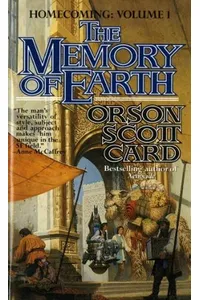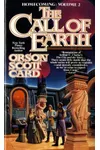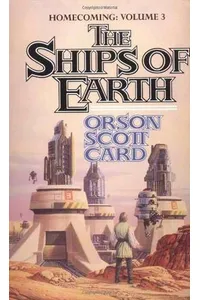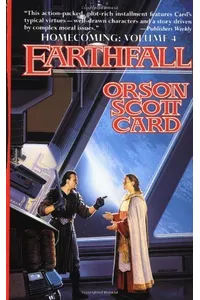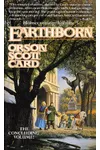Step into the captivating universe of the Homecoming Saga, where humanity’s distant future collides with timeless questions of faith and destiny! Written by Orson Scott Card, this science fiction epic whisks readers 40 million years into the future to the planet Harmony, where an artificial intelligence called the Oversoul guards humanity against its own destructive tendencies. With a unique blend of sci-fi adventure and Mormon-inspired theology, this five-book series offers a thought-provoking journey that’s as philosophical as it is thrilling.
Unlike Card’s more famous Ender’s Game, the Homecoming Saga dives into a richly imagined world where spirituality and technology intertwine. It follows Nafai, a young man chosen by the Oversoul to lead a group back to a long-abandoned Earth, exploring themes that resonate with readers who love deep, character-driven narratives.
How Homecoming Saga Began
Orson Scott Card, a master of science fiction and fantasy, drew inspiration for the Homecoming Saga from the Book of Mormon, reimagining its narratives in a futuristic setting. Begun in the early 1990s, the series reflects Card’s fascination with human nature, faith, and the consequences of technology. As a practicing member of the LDS Church, Card infused the saga with theological undertones, creating a narrative that feels both cosmic and deeply personal. The first book, The Memory of Earth, was published in 1992, kicking off a journey that spans five volumes and blends space opera with spiritual allegory.
The Heart of Homecoming Saga
The Homecoming Saga unfolds across five books, each building on the last to create a sprawling yet intimate epic. The Memory of Earth introduces Nafai, a teenager in the matriarchal city of Basilica, who hears the Oversoul’s voice guiding him to save Harmony from its failing AI. The Call of Earth deepens the quest as Nafai’s family faces internal strife and prepares for a perilous journey. The Ships of Earth follows their trek across Harmony’s deserts to a hidden spaceport, exploring family dynamics and survival. Earthfall shifts the setting to Earth, where the group confronts new species and cultural clashes, while Earthborn, set centuries later, wraps up the saga with themes of legacy and renewal.
The series weaves themes of faith, free will, and the tension between technology and spirituality. Card’s Harmony is a world where the Oversoul suppresses dangerous technologies to prevent war, raising questions about control versus autonomy. The saga’s Mormon-inspired framework—characters like Nafai mirror figures from the Book of Mormon—adds a unique layer, blending sci-fi with religious allegory. Yet, the story remains accessible, with complex characters and political intrigue that keep readers hooked, even if the final books introduce less likable characters, as some fans note.
Why Homecoming Saga Resonates
Though less celebrated than Ender’s Game, the Homecoming Saga has carved a niche among fans of thoughtful science fiction. Its blend of spiritual depth and futuristic adventure appeals to readers who enjoy exploring big ideas through personal stories. The series’ influence lies in its ability to reframe religious narratives in a sci-fi context, making it a standout in Card’s oeuvre. Fan reviews praise its immersive world-building and complex family dynamics, though some critique its slower pace or overt theological parallels. Still, its unique premise ensures it remains a hidden gem for those seeking something beyond typical space operas.
- Publication Years: 1992–1995
- Number of Books: 5
- Genres: Science Fiction, Space Opera, Science Fantasy
- First Book: The Memory of Earth
Ready to explore a sci-fi epic that blends faith, family, and the far future? Grab The Memory of Earth and dive into the Homecoming Saga’s unique world today!
